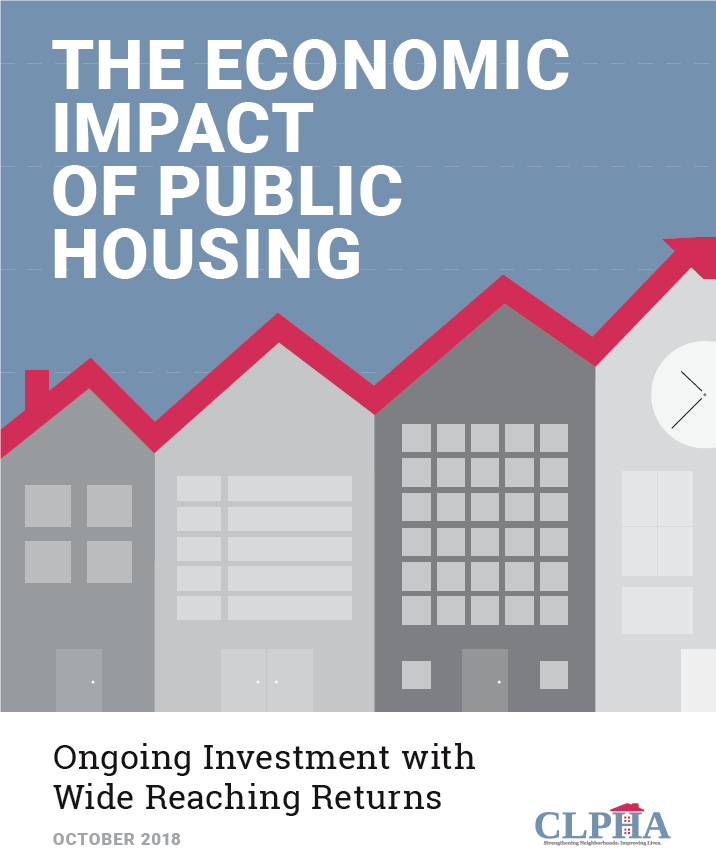
New research from CLPHA and Econsult Solutions shows that PHAs generate and induce multiple streams of economic activity benefitting those who reside in public housing, as well as local employers, governments, and industries. "The Economic Impact of Public Housing: Ongoing Investment with Wide Reaching Returns," highlights four key findings:
Public Housing is an Economic Driver
Housing authorities generate economic impacts that ripple through the community, city, and region. PHAs own and manage large property portfolios as well as directly support real estate markets through Housing Choice Vouchers and other housing assistance payments.
- Every $1 million PHAs spend on capital investments generates $1.89 million in economic activity and supports 11 full-time jobs
- From FY13-17, PHAs in Akron, Charlotte, Kansas City, Los Angeles, New York, and Oklahoma spent $4.5 billion on capital needs and generated an estimated $7.6 billion in economic activity, supporting 7,600 full-time jobs
Public Housing is Workforce Housing
While the majority of public housing residents are elderly and/or disabled, among work-able households, most are either working, subject to work requirements, or have worked recently.
Public Housing is a Long-Term Investment
The 1.1 million public housing units around the country are a significant investment by the federal government, with a replacement cost of $183 billion.
Public Housing is a Tax Revenue Generator
Public housing is a critical element of regional and local infrastructure due to its proximity to transportation, business centers, educational opportunities, other housing, and community centers, as well as its multiple economic intersections and influence on the economic growth of their cities.
- 6 PHAs generate $69 million in city tax revenue and $215 million in state tax revenue each year.